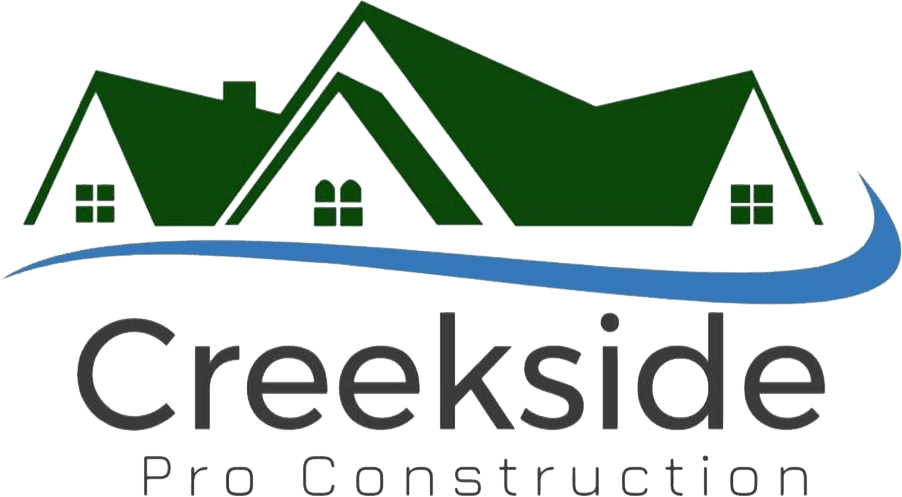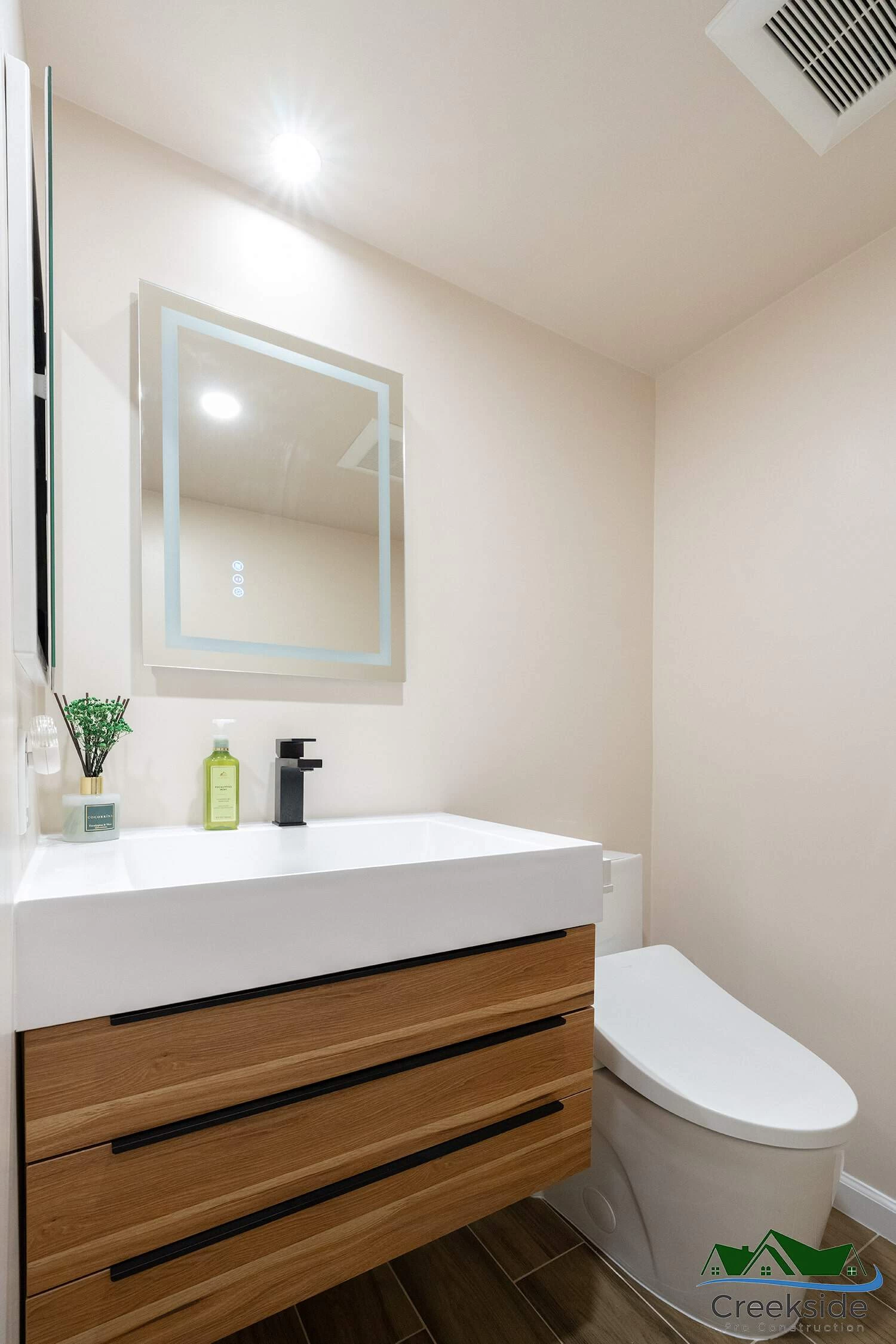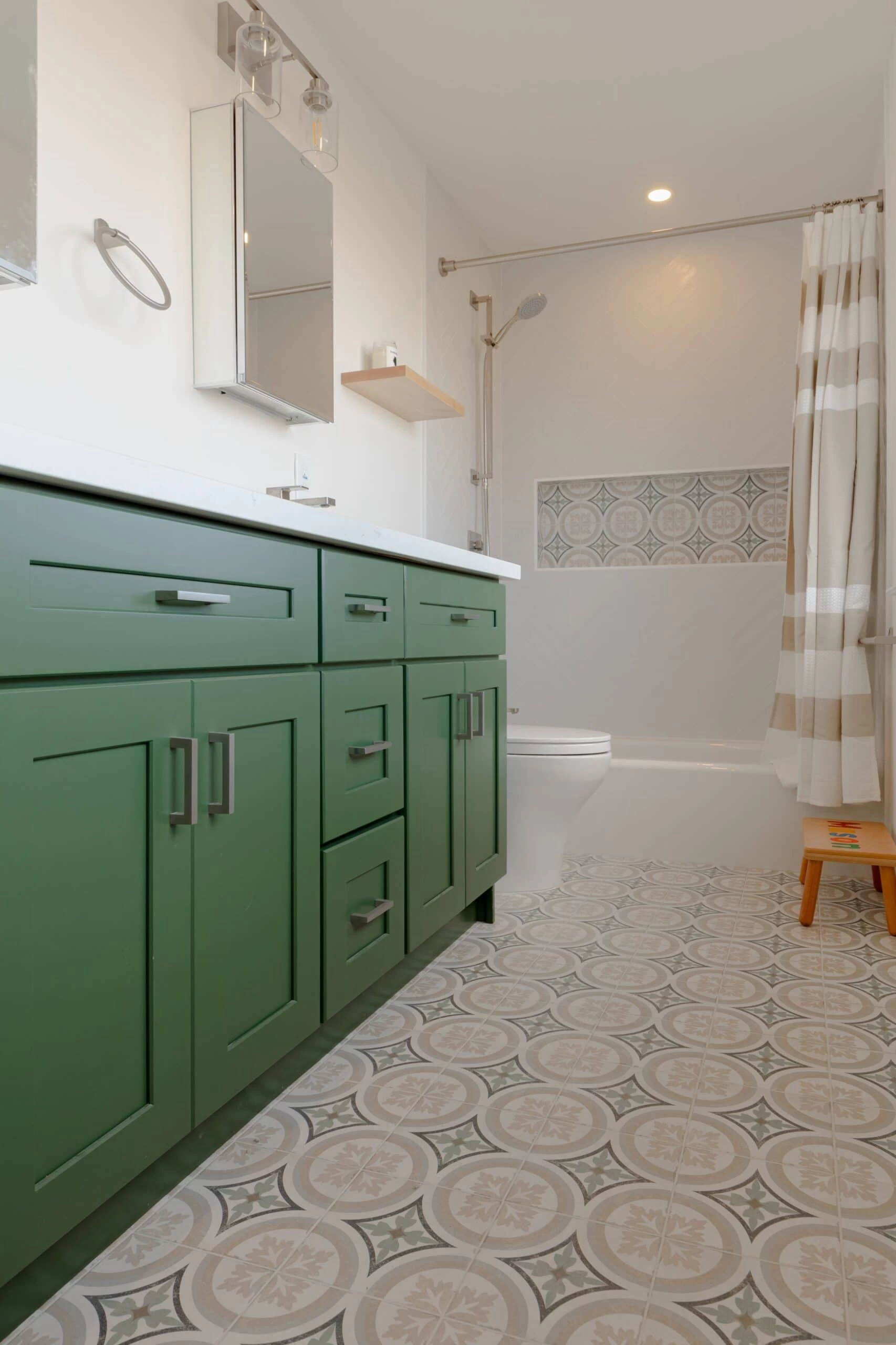Summary:
Setting the Stage: Initial Planning Steps
The journey to your dream home begins with thoughtful preparation and setting a clear goal. This foundational phase determines the trajectory of your entire project, making it essential to invest adequate time and consideration into each aspect.
Define Your Goals: What do you want to accomplish with the remodel? This seemingly simple question requires deep consideration of multiple factors. Think about your budget realistically, considering not just what you can afford upfront, but what financing options might be available and how the investment will impact your long-term financial planning. Determine your desired timeline carefully, factoring in:
- Seasonal considerations
- Family schedules
- Any upcoming life events that might be affected by construction
Most importantly, clearly define the scope of the work. Are you looking to update a single room, renovate an entire floor, or transform your whole house? Understanding the full extent of your project helps you communicate effectively with construction contractors and makes sure everyone is aware of the expectations.
Beyond the practical considerations, think about the lifestyle improvements you want. Are you remodeling to accommodate a growing family, create better entertainment spaces, improve energy efficiency, or simply update outdated features?
These underlying motivations will guide every decision throughout the process and help you prioritize when trade-offs become necessary.
Gather Inspiration: Collecting images and ideas from magazines, websites, and open houses is an essential step in visualizing the result you want and communicating your vision to your design team. Create both digital and physical inspiration boards, organizing ideas by room or theme. Pay attention to specific details that appeal to you:
- The way light flows through a space
- Texture of materials
- Functionality of storage solutions
- Overall mood created by color schemes
Visit model homes, attend home tours, and explore showrooms to experience different materials and layouts in person. What looks appealing in a photograph might feel different when you can touch surfaces and move through spaces.
Take notes about what specifically draws you to certain designs and consider how those elements might work in your own home’s unique layout and with your family’s lifestyle.
Don’t limit yourself to homes like yours. Sometimes the best ideas come from unexpected sources. A commercial space might inspire an innovative storage solution, or a vacation rental might showcase how to maximize a small area’s potential.
Assemble A Team: Research and choose construction contractors and designers whose work matches your taste and whose approach aligns with what you need for your project. This process requires reviewing portfolios and looking for professionals who have specific experience with projects like yours in size, scope, and style. If you’re planning a kitchen remodel, prioritize contractors who can show you multiple successful kitchen renovations. If your project involves structural changes, make sure your team has the necessary engineering expertise.
Check references thoroughly, asking previous clients about communication style, following timelines, cleanliness during construction, problem-solving abilities, and overall satisfaction with the result. Visit completed projects if possible, to see the quality of workmanship firsthand. Verify that all contractors are properly licensed and insured in California and check their standing with the Contractors State License Board.
Consider the personalities and working styles of potential team members. You’ll be working closely with these professionals for weeks or months, so compatibility matters. Some homeowners prefer contractors who give frequent updates and involve them in day-to-day decisions, while others want minimal disruption and prefer to leave details to the professionals.
Communication Is Key: Establish clear lines of communication with your team from the very beginning. Determine how often you’ll receive updates, through what channels (email, text, phone calls, or in-person meetings), and what level of detail you prefer.
Discuss how decisions will be made when unexpected issues arise—and they almost certainly will. Create a system for documenting changes to the original plan, guaranteeing that any modifications to scope, timeline, or budget are agreed upon in writing.
Set expectations for site access, working hours, and any house rules that are important to your family. If you have pets, young children, or work from home, these factors will influence how the project is managed.
Clear communication prevents misunderstandings and builds the foundation for a collaborative relationship with your construction team.
Budgeting Realities: Financial Planning
Creating a detailed budget is perhaps the most vital aspect of remodeling planning, yet it’s often where homeowners make costly mistakes. A realistic budget offers a framework for making informed decisions throughout the project.
Comprehensive Budget Components: Account for all project elements. Material costs can vary dramatically based on quality, availability, and sourcing. Research current prices for major components like:
- Flooring
- Fixtures
- Appliances
- Cabinetry
Understand that prices can fluctuate during your project timeline. Labor costs in Contra Costa County reflect the area’s skilled workforce and higher cost of living, so budget accordingly for quality craftsmanship.
Don’t overlook permit fees, which vary depending on your project scope and local jurisdiction requirements. Inspection fees, plan review costs, and potential re-inspection fees if work doesn’t pass the first time should all be factored into your budget. If your project requires engineering analysis, architectural drawings, or other professional services, include these costs in your initial planning.
Consider temporary living expenses if your remodel will disrupt normal household activities. Kitchen renovations might require eating out more often or setting up a temporary cooking space. Bathroom remodels might need alternative arrangements or even temporary accommodations in extreme cases.
The Critical Contingency Fund: Hidden costs are virtually inevitable in any remodeling project. A well-planned contingency fund of 10-20% of your total budget prevents project delays when unexpected issues arise.
Common surprises include:
- Outdated electrical or plumbing systems that require upgrading to meet current codes
- Structural issues discovered when walls are opened
- Damage to adjacent areas during construction.
Weather can impact timelines and costs, particularly for projects involving roofing or exterior work. Material delays, especially for custom or specialty items, can extend project duration and potentially increase labor costs. Having a financial buffer allows you to address these challenges without compromising the quality of your renovation or creating financial stress.
Strategic Fund Allocation: Divide funds wisely to avoid financial strain and guarantee the most important aspects of your project receive adequate resources. The general rule of thumb allocates the largest portion of your budget to areas that have the most value and daily impact.
In kitchen remodels, this typically means prioritizing quality cabinetry and appliances over decorative elements. For bathroom renovations, investing in quality plumbing fixtures and waterproofing pays long-term dividends.
Consider the timing of major expenses and coordinate payments with project milestones. This approach protects you from paying for work that hasn’t been completed while making sure contractors have the cash flow necessary to purchase materials and maintain progress.
Timeline Mastery: Scheduling Your Project
Effective timeline management requires understanding the complex interdependencies between:
- Different trades
- Material delivery schedules
- External factors that can impact progress
Seasonal Considerations: Contra Costa County’s Mediterranean climate offers advantages for year-round construction, but certain seasons are more favorable for specific types of work.
Spring and fall typically offer the most predictable weather conditions, making them ideal for exterior work, roofing projects, and any renovations requiring temporary openings in your home’s envelope.
Summer’s dry conditions are excellent for projects involving concrete work, painting, and flooring installation, but extreme heat can impact working conditions and material performance.
Winter brings the possibility of rain delays for exterior work, though it’s often an excellent time for interior renovations when outdoor living spaces aren’t as critical to daily life.
Permit Processing Time: Understanding local permit processing timelines is essential for accurate project scheduling. Simple permit applications might be approved within days, while complex projects requiring engineering review, environmental assessments, or neighborhood notification processes can take several weeks or even months.
Submit permit applications as early as possible in your planning process, understanding that approved permits typically have expiration dates that require project commencement within specific timeframes.
Material Lead Times: Custom materials, specialty fixtures, and even some standard items can have significant lead times, particularly during busy construction seasons or periods of supply chain disruption.
Order long-lead items early in the process, even before construction begins, to prevent delays. This approach requires careful coordination with your contractor to guarantee delivery timing aligns with installation schedules.
Trade Coordination: Professional contractors know the sequence of different trades and the time required for each phase of work. Electrical and plumbing rough-in work must be completed and inspected before drywall installation. Flooring installation typically comes after painting but before final fixture installation.
Understanding these dependencies helps set realistic expectations for project duration and identifies critical path activities that could impact overall timeline if delayed.
Material Selection and Design Choices
The materials you choose will impact both the aesthetic appeal and long-term functionality of your renovated space. In Contra Costa County’s climate, with its hot, dry summers and mild, wet winters, certain material characteristics become particularly important.
Durability and Performance: Choose materials that fit your style and budget while considering their long-term performance characteristics. For kitchen remodels, quartz countertops offer excellent resistance to scratches, stains, and heat, making them ideal for busy cooking spaces. Their non-porous surface doesn’t require sealing like natural stone, reducing maintenance requirements over time.
Think about how materials will age and weather in your specific environment. Hardwood flooring can be beautiful but may require more maintenance in areas with high humidity or temperature fluctuations. Tile and stone options often offer better moisture resistance for bathrooms and areas prone to spills.
Energy Efficiency Considerations: Modern material choices can significantly impact your home’s energy efficiency and comfort. High-performance windows, proper insulation, and eco-friendly appliances reduce utility costs and qualify for rebates or tax incentives. LED lighting fixtures, smart thermostats, and Energy Star-rated appliances contribute to long-term savings that can offset higher initial costs.
Balancing Aesthetics with Functionality: When it comes to design, balance aesthetics with functionality to create spaces that are both beautiful and livable. Design choices should reflect your taste and lifestyle while also adding value to your home. Consider how you actually use each space and design accordingly.
A beautiful but impractical kitchen layout will frustrate daily cooking activities, while a stunning bathroom that lacks adequate storage will create ongoing organizational challenges.
Think about maintenance requirements for different design choices. Intricate tile patterns might look gorgeous initially but can be challenging to clean and maintain over time. Light-colored materials might show wear and stains more readily than darker alternatives.
Creekside Pro Construction can guide you through these choices, helping you understand the practical implications of different design choices while achieving the aesthetic you desire.
Value-Adding Selections: Consider how your material and design choices will impact your home’s resale value. While you should primarily design for your own enjoyment, understanding which improvements typically offer good return on investment helps guide decisions when choosing between similar options. Kitchen and bathroom renovations generally offer strong returns, particularly when they improve functionality and modernize outdated features.
Neutral color schemes and classic design elements tend to have broader appeal and longer-lasting style relevance than highly personalized or trendy choices. Major investments like cabinetry, flooring, and fixtures might benefit from more timeless selections, while personality can be expressed through easily changeable elements like:
- Paint colors
- Hardware
- Accessories
Permitting Processes: Navigating Regulations
Understanding the permitting process in Contra Costa County is an integral part of executing your remodel correctly and legally. This complex regulatory landscape exists to guarantee safety, maintain property values, and preserve community standards, but navigating it requires patience and attention to detail.
Local Building Codes and Regulations: Research local building codes and regulations that apply to your specific project and location. Contra Costa County has specific requirements that may differ from neighboring jurisdictions. Building codes address:
- Structural safety
- Fire safety
- Accessibility
- Energy efficiency
- Environmental concerns
Understanding setback requirements, height restrictions, lot coverage limitations, and architectural guidelines helps make sure your renovation plans comply with local standards from the initial design phase.
Some neighborhoods have additional restrictions through homeowners’ associations or historic district requirements that layer additional approval processes onto county requirements.
Permit Types and Requirements: Different types of work require different permits. Minor repairs and maintenance typically don’t require permits, while structural changes, electrical work, plumbing modifications, and additions almost always do. Kitchen and bathroom remodels usually require permits due to:
- Electrical
- Plumbing
- Potential structural modifications
The permit application process typically requires detailed plans, specifications, and sometimes engineering calculations. Professional contractors and architects familiar with local requirements can simplify this process, but homeowners should know what’s required and why. Permit fees vary based on project value and complexity, and the review process can take anywhere from days to months depending on the scope and complexity of your project.
Inspection Requirements: Proper permits trigger required inspections at various phases of construction. These inspections guarantee work meets code requirements and is performed safely. Common inspection points include:
- Foundation work
- Framing
- Electrical rough-in
- Plumbing rough-in
- Insulation
- Drywall
- Final inspection
Failed inspections can delay project completion and need additional work to meet code requirements. Working with experienced contractors who understand local inspection standards helps make sure work passes inspection the first time, avoiding delays and additional costs.
Consequences of Unpermitted Work: Avoiding the permitting process might seem like a way to save time and money, but unpermitted work can create significant problems. Legal issues can arise when selling your home, as buyers and lenders often require verification that work was done with proper permits. Insurance claims might be denied if damage is related to unpermitted work that doesn’t meet code requirements.
The county can require unpermitted work to be brought up to code or even removed, creating expensive remediation requirements. Additionally, unpermitted work doesn’t receive the safety oversight that inspections offer, potentially creating hazards for your family.
Living Through the Remodel: Minimizing Disruption
Planning for living through your remodel is essential for maintaining your family’s sanity and routine during what can be a stressful period. Thoughtful preparation makes the difference between a tolerable inconvenience and a chaotic ordeal.
Temporary Living Arrangements: Make a temporary living space that maintains essential functions during construction. For kitchen remodels, create a temporary cooking area in another room with a microwave, coffee maker, and other essential appliances. Stock up on paper goods and easy-to-prepare meals to reduce the impact of limited cooking facilities.
Bathroom renovations require alternative arrangements for daily hygiene routines. If you have multiple bathrooms, plan the renovation sequence to always maintain at least one working bathroom. For single-bathroom homes, consider the timing of work phases and discuss daily schedules with your contractor to minimize conflicts.
Dust and Debris Management: Minimize dust and debris through proper containment and daily cleanup routines. Professional contractors use plastic sheeting and temporary walls to isolate construction areas, but dust inevitably spreads beyond the work zone. Protect furniture and belongings with dust covers, and consider moving valuable or sensitive items to unaffected areas.
Establish daily cleanup routines with your construction team to maintain livable conditions in non-construction areas. This might include:
- Sweeping walkways
- Wiping down surfaces
- Removing debris from common areas at the end of each workday
Communication with Neighbors: Tell your neighbors about potential noise and disruptions they may experience, particularly if your project involves early morning work, heavy equipment, or extended construction periods. Giving advance notice and contact information for addressing concerns helps maintain good neighborhood relationships.
Consider small gestures of consideration, such as making sure construction vehicles don’t block neighbor’s driveways or that debris doesn’t blow onto other properties. Most neighbors understand temporary construction inconveniences when they’re kept informed and see that their concerns are respected.
Maintaining Routines: Try to maintain family routines as much as possible during construction. This might mean adjusting mealtimes, creating quiet spaces for work or homework, or planning activities outside the home during particularly disruptive phases of construction.
Understand that some disruption is inevitable and prepare family members, especially children, for temporary changes to their normal routines. Creekside Pro Construction knows the challenges of living through a remodel and works diligently to minimize disruption while maintaining project progress and quality standards.
Final Thoughts: Achieving Your Dream Remodel
Ultimately, a successful home remodel in Contra Costa County relies on solid planning, realistic expectations, and collaboration with experienced professionals who understand both the technical requirements and the human aspects of renovation projects. The key to achieving your dream remodel lies in balancing your vision with practical considerations, maintaining flexibility when unexpected challenges arise, and trusting the expertise of your construction team while staying actively involved in the decision-making process. Define your goals clearly, budget wisely with appropriate contingencies, and choose materials that meet both your aesthetic preferences and practical needs. Understand the permitting process and work with professionals who can navigate regulatory requirements smoothly. Most importantly, prepare for the realities of living through construction while maintaining focus on the results you will get. Remember that every challenge overcome during the remodeling process brings you closer to the home of your dreams. With proper planning, realistic expectations, and the right team of professionals, your Contra Costa County home remodel can transform your living space while creating lasting value and enjoyment for your family. For a well-executed remodel that combines quality craftsmanship with thoughtful project management, reach out to experienced professionals who understand the unique aspects of renovating in Contra Costa County. The investment in proper planning and professional execution pays dividends in the quality of your finished project.




